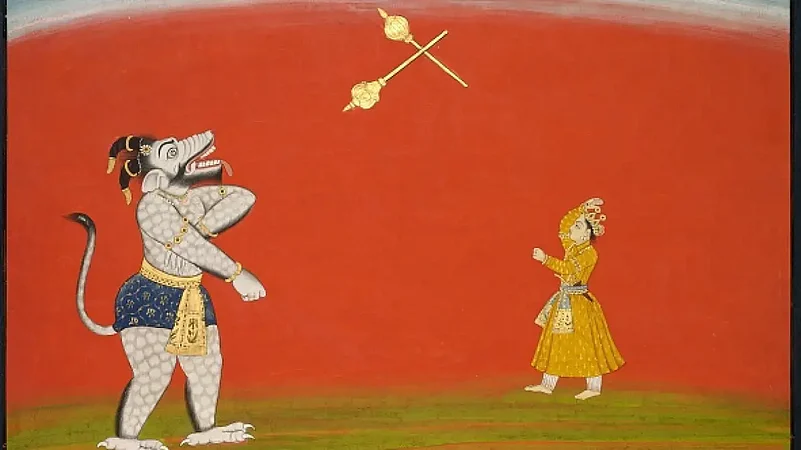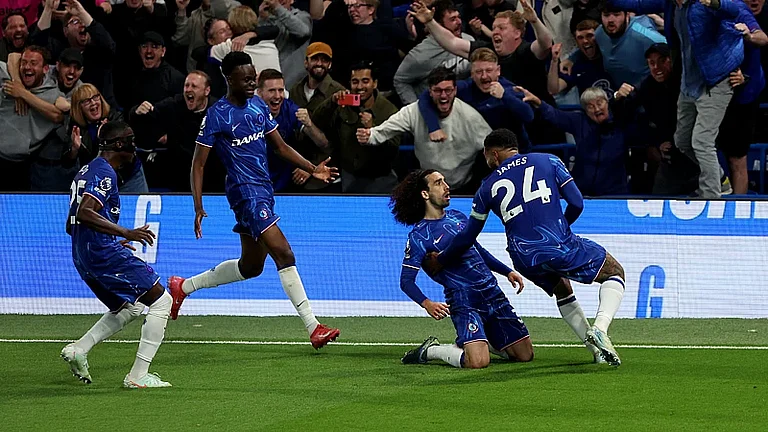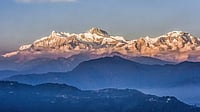VVS Laxman has a bit of Ramayan in his name. His contemporary Virender Sehwag once jokingly professed a connection with Ram’s loyal vaanar Angad, because neither moved their feet. Archer Tarundeep Rai was drawn to the bow and arrow because of watching Ramayan on television. Cricketers named Ram are present in India, Oman, Nepal and Sierra Leone. Even Pakistan has a player named Ravi Ram.
There is, thus, a fair amount of Ramayan in sport. How much of sport was there in the time of Ram?
There was no Ayodhya Premier League, or sport as we know it, but there was a version of it. There had to be, given that agility, strength, stamina and tactics were central to the hardy lifestyles and warfare of that period.
Since everything starts with the mind, we’ll start with a mental sport. There seems to be a consensus that chess was played during the era of Ram. In the late 2000s, former chess world champion Viswanathan Anand wrote an essay in ‘Time’ on the origins of the game. In it, he remembered his grandmother telling him the story of Mandodari, Ravana’s chess-loving wife.
Ravan is said to have introduced Mandodari to chess, in order to keep her entertained. When husband and wife play, Mandodari emerges the victor.
"My grandmother told me that story when I first began to play the game at age six," Anand wrote. He added that there was a mention of chaturanga, the game of war strategy, in Arthashastra from the 3rd century B.C.
Dedicated chapters on sports and games during the Ramayana are rare. But in 2018, the author Devdutt Patnaik dealt specifically with this subject. In a column titled ‘Even the Gods played sport’ in Mid-Day, Patnaik wrote, “In Ramayan and Mahabharat, the warrior princes are shown as being proficient in archery, mace-warfare, fencing, wrestling, and similar military sports. Thus, we can safely say that sport in India began in both agricultural communities as well as martial communities.”
Also Read: Who Is Ram And What Is His Story?
Ram’s best sport was archery, according to many records. In a translation of Valmiki’s Ramayan by Hari Prasad Shastri, Akampana, Ravan’s uncle, warns his nephew of Ram’s skill in the following words:
"O King, Ram is a mighty warrior, an invincible archer and the equal of Indra himself in prowess; his eyes are slightly red and his voice resembles a kettledrum, his countenance is like unto the full moon. Followed by Lakshmana, as Anila follows Pavaka, this is the fortunate leader of monarchs who has destroyed thy colony, as fire, fanned by the wind, consumes a forest. His golden-winged arrows flying through the air, transforming themselves into five-headed snakes, destroyed the demons. O Mighty Sovereign, wherever they fled in their terror, they beheld Rama standing before them, and in this way, Janasthana was destroyed by him."
Further on in the text is a mention of sports areas in Ravan’s palace in Lanka. As a worried Hanuman, so far luckless in finding the abducted Sita, scours Ravan’s property, he vows, “It is my intention to put forth fresh efforts and investigate all those regions not yet visited by me, and the banqueting halls, the gardens, the sports pavilions, the courtyards, dwellings, highways, alleys and chariots, though already searched by me, shall be examined once again.”
Many years ago, the sports presenter Milind Wagle stumbled upon information that suggested the wide prevalence of sports and games during the age of Ram. He was involved in making a Doordarshan documentary on the land’s indigenous sports. During their research, the team found that some of the games seemed to date back to the Ramayan period.
“The idea was to tell the viewer that the concept of indigenous sport was not new, and that many of those sports had come to us from Ramayan and Mahabharat,” Wagle told Outlook. “We all know that they were taught archery, for one. There also are traces of chariot racing and a few other sports or pastimes from those periods, in places like Ayodhya and Kurukshetra. We had shot the documentary in different parts of India, and in each place the producers had done their research.”
Wagle found the Ramayana-sport connect even when he visited Thailand, a country which reveres Ram, and where a town is called Ayutthaya (Thai for Ayodhya). Wagle said there were depictions of sport in Ramayana murals at the Royal Palace in Bangkok.
Wrestling, or malla-yuddha, is another sport closely associated with Ramayana. Hanuman was known to have been good at it. In 2018, the late Indian cricketer and Uttar Pradesh sports minister Chetan Chauhan said, "I believe that he (Lord Hanuman) was a sportsman who used to wrestle with his enemies. All the sportsmen of our country worship him as they require strength and energy like him to emerge victorious.”
Patnaik also mentioned the sport in his piece. “Wrestling scenes are carved on temple walls,” he wrote. “Krishna loved wrestling, though Rama is never shown wrestling, differentiating the avatar that was raised in a cowherd family from one born in a royal family.”
There are versions of the epic which mention a clash of two wrestling titans - Bali, the vaanar king, and Ravana. There also are wrestling techniques named after characters from Ramayana. The Hanumanti style focuses on technical superiority. Then, there is Jambuvanti, which is based on different locks and holds to immobilise and then vanquish an opponent.
Also Read: Asura: The Last Words Uttered By Ravan
A July 2020 Conference paper by Dr Usha Tiwari (Associate professor, Department of physical education, Central University, South Bihar), student Monika Singh and Dr. Dhirendra Tiwari, Assistant director Physical Education, Banaras Hindu University, threw some light on different sports during Ramayana.
“During the period of Ramayana, hunting, archery, horse riding, swimming were royal games,” the paper said. “Lord Ram himself was known for his mastery in archery, horse and chariot-riding. Ayodhya, Kishkindha and Lanka were the centre of many games and sports.”
It is worth noting that much of India’s newfound swagger in Olympic sports have come from disciplines like wrestling, weight-lifting, shooting and javelin. These are obvious descendants of sports that existed during the Ramayan. According to Niti Aayog, the government’s public policy think-tank, the Centre is keen on developing such sports, and indigenous ones, further. It also acknowledged the success of women in sports seen as traditionally male, and how that has pushed back patriarchal forces.
“Our epics like Ramayan and Mahabharat are full of incidences of sports such as archery, wrestling, horse-riding and chariot-racing,” a post on the Niti Aayog website said. Further on, it praised the success achieved by India’s women wrestlers. “This one development has dismantled the concept of females as the fairer sex -- often used to denote the fragility and physical weakness of women -- and challenged the gender role and occupation for women. The young girls and women from rural India have role models --who are like them, come from similar backgrounds, and overcame challenges to succeed. The legend of the Phogat sisters has changed the outlook of patriarchs, many have become champions of gender equality and promote girls in sports.”
Mallakhamb, often described as the mother of all sports, thanks to the outrageous flexibility and strength it demands, is another indigenous sport that is said to trace its roots to the Ramayana. Mallakhamb was demonstrated to international audiences on the sidelines of the 1936 Berlin Olympics. Spectators were impressed, and for years Indian mallakhamb performers have been invited all over the world to display their beautiful contortions. Likewise, many German and other international tourists have travelled to India to learn the sport. The Shree Samarth Vyayam Mandir in Shivaji Park, Mumbai, is often the destination of choice for mallakhamb fans, Indian or international.
At the upcoming National Games in Gujarat, mallakhamb and yoga will make their debut. In part at least, these, and some other sports, owe gratitude to ancient texts such as the Ramayana.


























